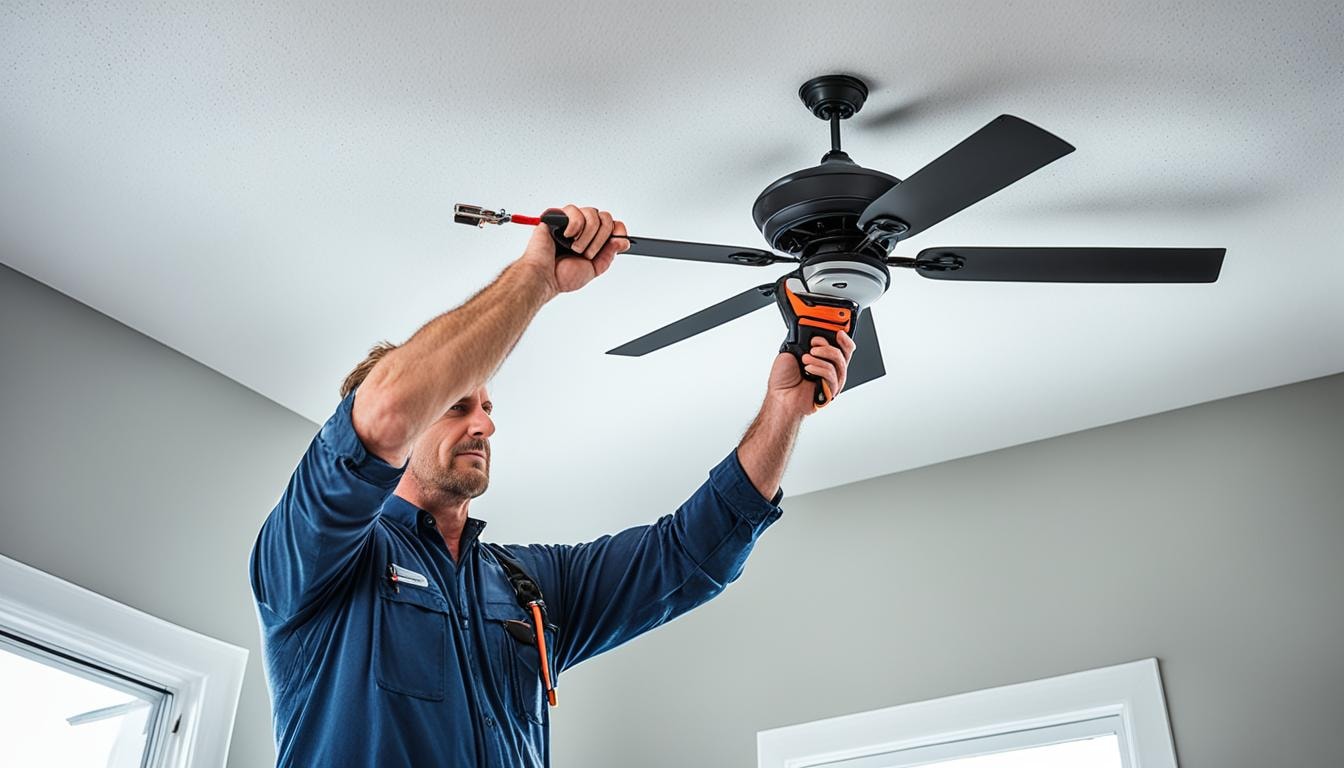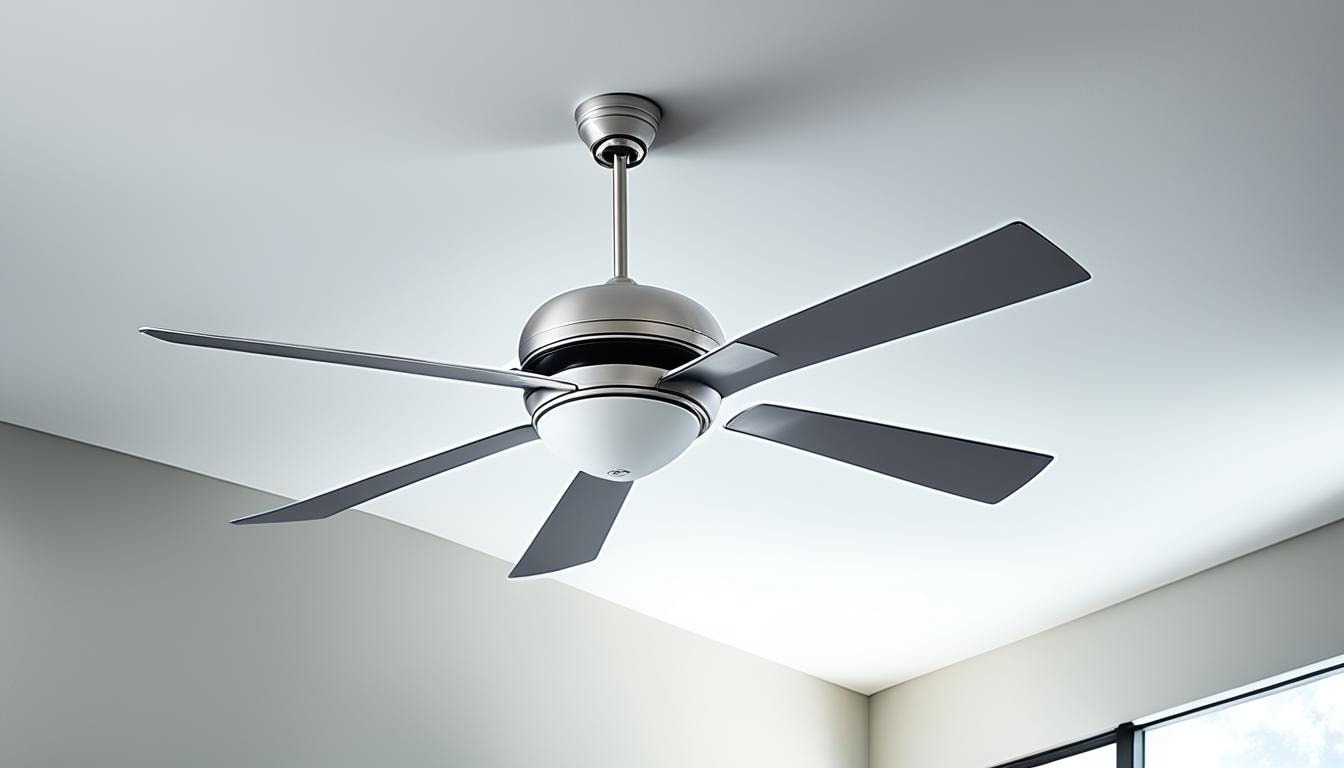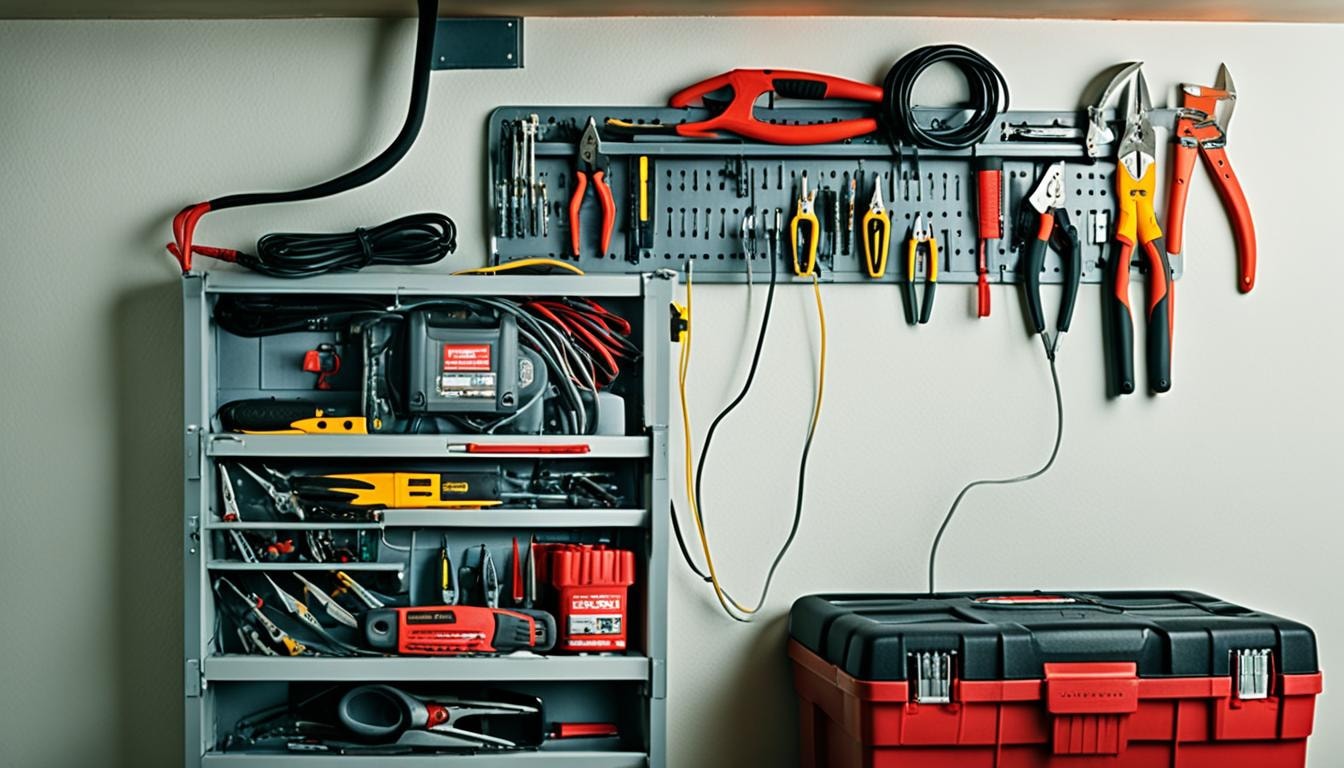Ceiling Fan Installation Near You
Can’t find what you are looking for?
How It Works
-
Answer a few questions about your home project.
-
Within seconds, get matched with top-rated local pros.
-
Compare quotes and choose the best pro for the job.
Ceiling Fan Installation In Your Area
Ceiling Fan Installation: A Guide to Hiring the Right Professional
Meta Description: Discover expert tips for hiring the right professional for your ceiling fan installation. Ensure safety, efficiency, and proper functionality in your home.
Upgrading your home with a new ceiling fan is a big step. You might wonder if you should do it yourself or hire a pro. The right choice can affect the fan’s performance and safety.
So, what makes for a good ceiling fan installation? It’s about knowing the complex parts and when to get expert help.

Key Takeaways
- Ceiling fan installation needs careful attention to electrical safety, wiring, and mounting.
- Getting a professional electrician ensures a smooth install and avoids risks.
- Things like ceiling height, fan size, and wiring affect how hard the install is.
- Some people can install a ceiling fan themselves, but it’s tricky for the unskilled or in tough homes.
- Professional install offers perks like warranty and following building codes.
This guide will cover why hiring a pro for ceiling fan installation is smart. We’ll look at the challenges and what to think about before deciding to go DIY or get a pro. By the end, you’ll know how to pick the best option for your home’s comfort and style.
The Importance of Properly Installed Ceiling Fans
Ceiling fans are more than just pretty to look at. They are key to making a room comfy. When put in right, they look good and work well. This makes a home more beautiful and saves energy.
Aesthetic Appeal and Energy Efficiency
A good ceiling fan can be the highlight of a room. It mixes looks with usefulness. It fits well with a room’s style, making it look better.
Also, it saves energy. By moving air around, you can keep your AC a bit higher. This doesn’t mean you’ll feel hot.
Improving Indoor Air Circulation
A ceiling fan also makes air move better in a room. This means the temperature stays even. You won’t need to keep changing the AC.
This better air flow also means cleaner air. This is good for your health.

Getting a ceiling fan installed right can change how you see your home. It saves energy, makes the place look nicer, and keeps the air clean. A ceiling fan is a smart choice for a comfy and stylish home.
Ceiling Fan Installation: A DIY Project or Professional Job?
There’s a special feeling when you look at what you’ve done yourself. Installing a ceiling fan can be a great DIY task. But first, you need to know the steps. If you’re good with basic wiring and electrical work, you might find it easy.
But, some jobs need a pro. Things like complex wiring, high ceilings, or if you’re not sure about the setup. You should think about safety, time and patience, and budget before deciding.
Getting a professional electrician for the job lowers the risk of mistakes. This can help prevent house fires. They also usually finish the job right the first time, saving you from future problems.
Electricians have the right tools and know-how. This can make the job go faster than if you did it yourself. You might end up spending more on tools or materials if you try it yourself and make mistakes.
Choosing between doing it yourself or hiring a pro depends on your skills, the job’s complexity, and your budget and schedule. Think about the good and bad sides to make sure you get a job done right and safely.

Understanding the Basics of Ceiling Fan Installation
Installing a ceiling fan can be a fun DIY project. But, it’s key to know the basics first. Start by checking the electrical box to make sure it’s strong, rated for fans, and can hold the fan’s weight. It’s also vital to find the ceiling joist. This will be where you attach the fan to keep it steady.
Assessing the Electrical Box and Ceiling Joists
The electrical box in the ceiling must be right for ceiling fans. Look for a “suitable for ceiling fans” stamp and a fan weight rating. This means the box can handle the fan’s weight safely. Finding the ceiling joist is also key. It’s where you’ll attach the fan’s bracket.
Matching Wires and Proper Connections
After setting up the bracket, it’s time to deal with the wiring. You’ll connect the ceiling wires to the fan wires, using wire nuts for a secure fit. If your fan has a remote, connect that too. Always follow the maker’s install and safety steps to get it right.
Knowing how to install a ceiling fan, from checking the box and joists to wiring it, helps you succeed. This way, you’ll make your home look better and save energy too.
Safety Considerations for Ceiling Fan Installation
Installing a ceiling fan needs careful safety steps. Before starting, make sure you follow important safety tips for a safe project. Here are the key steps for a secure ceiling fan setup.
Shutting Off Power and Testing Wires
First, turn off the power at the circuit breaker. This stops electrical dangers during the install. After turning off the power, check wires are dead with a voltage tester before touching them. Also, make sure the wall switch is off.
Working With a Helper and Proper Tools
Installing a ceiling fan is easier with a second person. They can hold the fan, hand you tools, or check connections. Also, have the right tools like an adjustable wrench, screwdrivers, and a ladder for safety and efficiency.
Follow these safety tips to lower electrical risks and make installing your ceiling fan go smoothly. Always put safety first when dealing with electrical systems.
Choosing the Right Ceiling Fan for Your Space
Finding the right ceiling fan is key for good air flow and looks. You need to think about the room size, blade span, ceiling height, and downrod length. These factors help you pick a fan that fits your space and improves the room’s look and feel.
Measuring Room Size and Blade Span
The room’s size helps decide the fan’s blade span. For small rooms (less than 76 square feet), a 29 to 36-inch fan is best. Medium rooms (76 to 144 square feet) need a 36 to 42-inch fan. Big rooms (over 225 square feet) should have a 54-inch or bigger fan.
Ceiling Height and Downrod Length
The ceiling height is also important. For standard ceilings (8 to 9 feet), a standard downrod works well. But for lower ceilings (under 8 feet), a flush mount is better. For high ceilings, you might need an extended downrod or an angled mount.
By measuring your room and ceiling, you can find the perfect ceiling fan. It will look good and help with air flow and saving energy.
Ceiling Fan Styles and Features
Ceiling fans come in many styles to match any room’s look. You can choose from traditional, modern, rustic, or tropical designs. They also have special features for better use.
Some fans have lights built in for air flow and light. These lights use LED bulbs and save energy and last long. You can change the fan’s direction with reversible blades.
Remote controls and smart home tech make using the fan easy. You can change the speed and settings from your chair.
The finish of the fan matters too. You can pick from brushed nickel, oil-rubbed bronze, or classic white wood. These finishes look good and make the fan last longer.
Whether you like modern or rustic styles, there’s a ceiling fan for you. Think about looks and useful features to pick the right one. This way, your home will look good and feel comfy.
In short, ceiling fans come in many styles and features. Homeowners can find one that fits their decor and makes their home better.
Preparing for Professional Ceiling Fan Installation
Some homeowners might try to install a ceiling fan by themselves. But, there are times when it’s smarter to hire a professional installation service. Things like complex wiring, tricky setups, or high ceilings make it hard. That’s when a licensed electrician should step in.
Also, some warranties need electrical work done by professionals. And, codes and regulations in your area might have special rules for electrical jobs. Knowing when a job is too hard or risky lets you finish it safely. It also keeps your warranties valid.
Before a professional ceiling fan installation, make sure you have the right tools. You’ll need a ladder, screwdriver, wire strippers, and a voltage tester. Don’t forget to turn off the power at the circuit breaker and check it’s off with a tester before starting any electrical work.
Preparing well and thinking about getting expert assistance helps. This way, you can have a safe and successful ceiling fan installation. It will also follow all local codes and regulations.
Remember, when it comes to professional installation, it’s safer to be careful. Always choose a licensed electrician for the job. This ensures it’s done safely and follows all codes and regulations.
Maintaining Your Ceiling Fan
Keeping your ceiling fan in good shape is important. It helps it work well and quietly for a long time. Clean the fan blades and housing often to stop dust and dirt from building up. This keeps the air flowing right and stops the fan from getting out of balance.
Check the fan’s balance and tighten any loose screws to stop it from wobbling. If the fan starts making strange sounds or isn’t working right, you might need to oil the motor bearings or change the blade angle. Taking care of your ceiling fan keeps it looking good and working well. It also saves energy over time.
- Clean the fan blades and housing often to stop dust from building up.
- Check the fan’s balance and tighten any loose screws to stop wobbling.
- Lubricate the motor bearings if the fan starts making unusual noises.
- Adjust the blade pitch if the fan seems to be losing efficiency.
By following these easy tips, your ceiling fan will keep moving air efficiently and save energy in your home. Regular care means your fan will work well for many years.
When to Hire a Professional for Ceiling Fan Installation
Installing a ceiling fan can be fun for some homeowners as a DIY project. But, there are times when it’s smarter to get a pro. If the wiring is complex or you’re not sure about the electrical setup, a licensed electrician is your best bet. They have the expertise to tackle these tricky situations.
High or vaulted ceilings can be tricky and risky. They might need special equipment for a safe install. If you have a warranty that needs professional installation, or you must follow local codes and regulations, an expert is a must.
Knowing your limits and choosing professional help can give you peace of mind. It ensures the job is done right and safely. A skilled electrician can prevent problems like wrong wiring, a shaky fan, or electrical dangers from DIY mistakes.
Complex Wiring or Electrical Situations
Right wiring is key for a ceiling fan’s safety and efficiency. If your home’s electrical system is complex or you don’t know much about wiring setups, get a pro. They’ll make sure the fan is safely connected and grounded. This lowers the chance of safety issues or problems later.
High or Vaulted Ceilings
Ceiling fans in high or vaulted ceilings need special equipment and skills for a solid install. A pro with the right tools and expertise can avoid safety risks. These risks include the fan falling or the ceiling getting damaged during install.
By understanding your limits and choosing a pro for your ceiling fan install, you get many benefits. You’ll enjoy better air flow, save energy, and make your room look better. All without the dangers of doing it yourself.
Enhance Your Home with FindPros
When it comes to ceiling fan installation, choosing the right professional can make all the difference. At FindPros, we connect you with top-rated local experts who understand the nuances of proper installation, ensuring your fan operates safely and efficiently. By filling out our simple survey, you can quickly receive multiple quotes from competing professionals, allowing you to compare pricing and find the best match for your project.
This competitive environment not only helps you secure the best pricing but also ensures you find a pro you feel comfortable working with. Start your journey to a more comfortable home today by answering a few questions about your project, and let us match you with the right professionals in seconds.
Conclusion
Installing a ceiling fan can be a fun DIY project for homeowners. But, it’s key to know the steps and the possible issues. This guide has shown you how to pick the right fan and install it right. Always put safety first when dealing with electrical stuff.
Sometimes, it’s best to hire a pro electrician. This is true for tricky wiring, high ceilings, or to meet local codes and keep warranties valid. Whether you do it yourself or get help, you’ll end up with a ceiling fan that makes your home more comfy, efficient, and stylish.
Think about your room’s size, ceiling height, and how energy-efficient you want to be. This helps pick the best ceiling fan for you. With the right install, whether you do it or hire someone, you’ll get better air flow, lower energy bills, and a stylish look in your home.
Frequently Asked Questions (Ceiling Fan Installation)
MOST POPULAR CITIES
Browse by State- Alameda
- Costa Mesa
- Laguna Beach
- Orange
- Alhambra
- Culver City
- Lancaster
- Oroville
- Anaheim
- Daly City
- Livermore
- Oxnard
- Antioch
- Davis
- Lodi
- Pacific Grove
- Arcadia
- Downey
- Lompoc
- Palm Springs
- Bakersfield
- El Centro
- Long Beach
- Palmdale
- Barstow
- El Cerrito
- Los Angeles
- Palo Alto
- Belmont
- El Monte
- Malibu
- Pasadena
- Berkeley
- Escondido
- Martinez
- Petaluma
- Beverly Hills
- Eureka
- Marysville
- Pomona
- Brea
- Fairfield
- Menlo Park
- Port Hueneme
- Buena Park
- Fontana
- Merced
- Rancho Cucamonga
- Burbank
- Fremont
- Modesto
- Red Bluff
- Calexico
- Fresno
- Monterey
- Redding
- Calistoga
- Fullerton
- Mountain View
- Redlands
- Carlsbad
- Garden Grove
- Napa
- Redondo Beach
- Carmel
- Glendale
- Needles
- Redwood City
- Chico
- Hayward
- Newport Beach
- Richmond
- Chula Vista
- Hollywood
- Norwalk
- Riverside
- Claremont
- Huntington Beach
- Novato
- Roseville
- Compton
- Indio
- Oakland
- Sacramento
- Concord
- Inglewood
- Oceanside
- Salinas
- Corona
- Irvine
- Ojai
- San Bernardino
- Coronado
- La Habra
- Ontario
- San Clemente